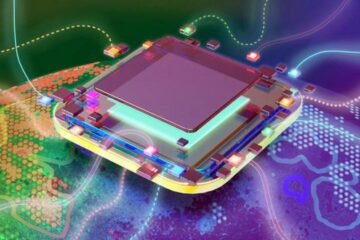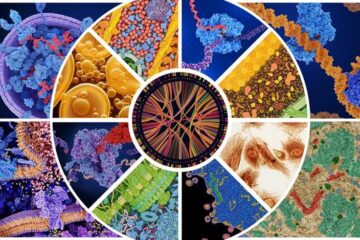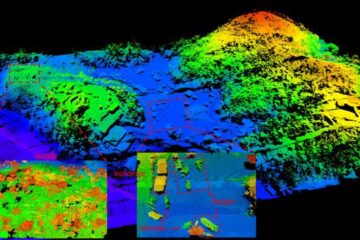Cellular pathway includes a ’clock’ that steers gene activity

Understanding the timed messages within cells could lead to new medical treatments
Researchers from The Johns Hopkins University and other institutions have discovered a biochemical “clock” that appears to play a crucial role in the way information is sent from the surface of a cell to its nucleus. These messages can cause the cell to thrive or commit suicide, and manipulating them could lead to new treatments for cancer and other diseases, the researchers say.
The findings, based on lab experiments conducted at Cal Tech and computer models developed at Johns Hopkins, are reported in the Nov. 8 issue of the journal “Science.”
Scientists have known that living cells send messages from their surfaces to their nuclei by setting off a chain of chemical reactions that pass the information along like signals traveling over a telephone wire. Such reaction chains are called signaling pathways. But while studying one such reaction chain called the NF-kappaB pathway within mouse cells, the university researchers learned that the signal transmission process is even more complicated.
“We found that if the pathway was activated for a short time, a single pulse of activity was delivered to the nucleus, like a single tick of a clock, activating a set of genes,” said Andre Levchenko, assistant professor in the Department of Biomedical Engineering at Johns Hopkins. “But longer activation could produce more pulses and induce a larger gene set. We believe that the timing between pulses is critical. If too much or too little time elapsed, the genetic machinery would not respond properly.”
Levchenko, a lead author on the “Science” paper, and his colleagues concluded that the signaling pathway inside a cell was serving as much more than a simple wire. “It was not just carrying the information, it was processing it,” he said. “The pathway was operating like a clock with a pendulum, delivering the signal at particular intervals of time in a way that could resonate with the behavior of the genes in the nucleus.”
When information moves through a cell pathway to genes in the nucleus, it prompts the genes to send out their own instructions, directing the cell to assemble proteins to carry out various tasks. By developing a better understanding of the way information travels along a pathway, Levchenko said, researchers may be able to create drugs that disrupt or change this line of communication, and in turn affect overall functioning within the cell. For example, a drug designed to shut down the NF-kappaB pathway might cause a cancer cell to commit suicide through a biological process called apoptosis. “We know that cancer cells use this pathway,” he said. “If we can find a smart way to cut this ’wire,’ it will be much easier to kill the cancer cells.”
Levchenko and his colleagues made their discovery by first developing a computer model showing how they believed the pathway operates. Then they verified their results by studying live cells in the lab. Finally, they used the validated model to guide further experiments. Although mouse cells called fibroblasts were used, Levchenko said the findings should also hold true for human fibroblasts and other cell types.
Because the computer model has been validated, it could be used to speed up the development of pharmaceuticals that might affect the cell pathway, said Levchenko, who is a part of a computational biology research team based at the Whitaker Biomedical Engineering Institute at Johns Hopkins. He said drug developers could use the computer model to quickly test how various compounds may affect the cell behavior before launching more time-consuming lab tests with live cells. “This has given us a very good tool to predict things that may happen when the pathway properties are altered, reducing the need to engage in exhaustive animal tests,” Levchenko said.
The other lead author of the Science paper was Alexander Hoffman, who engaged in the research as a postdoctoral scholar at Cal Tech and now is an assistant professor of biology at the University of California, San Diego. The co-authors were Martin L. Scott, who conducted research at MIT and who now is employed by Biogen Inc.; and David Baltimore, president of Cal Tech.
Color Image of Andre Levchenko available; Contact Phil Sneiderman Related Links:
Andre Levchenko’s Web page: http://www.bme.jhu.edu/~alev
Johns Hopkins Department of Biomedical Engineering: http://www.bme.jhu.edu
THE JOHNS HOPKINS UNIVERSITY
OFFICE OF NEWS AND INFORMATION
3003 N. Charles Street, Suite 100
Baltimore, Maryland 21218-3843
Phone: (410) 516-7160 / Fax (410) 516-5251
Media Contact
More Information:
http://www.jhu.edu/All latest news from the category: Life Sciences and Chemistry
Articles and reports from the Life Sciences and chemistry area deal with applied and basic research into modern biology, chemistry and human medicine.
Valuable information can be found on a range of life sciences fields including bacteriology, biochemistry, bionics, bioinformatics, biophysics, biotechnology, genetics, geobotany, human biology, marine biology, microbiology, molecular biology, cellular biology, zoology, bioinorganic chemistry, microchemistry and environmental chemistry.
Newest articles

A universal framework for spatial biology
SpatialData is a freely accessible tool to unify and integrate data from different omics technologies accounting for spatial information, which can provide holistic insights into health and disease. Biological processes…

How complex biological processes arise
A $20 million grant from the U.S. National Science Foundation (NSF) will support the establishment and operation of the National Synthesis Center for Emergence in the Molecular and Cellular Sciences (NCEMS) at…

Airborne single-photon lidar system achieves high-resolution 3D imaging
Compact, low-power system opens doors for photon-efficient drone and satellite-based environmental monitoring and mapping. Researchers have developed a compact and lightweight single-photon airborne lidar system that can acquire high-resolution 3D…





















